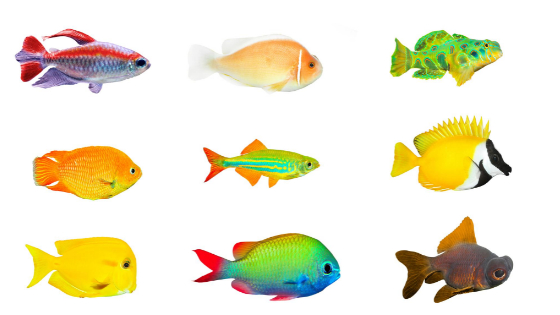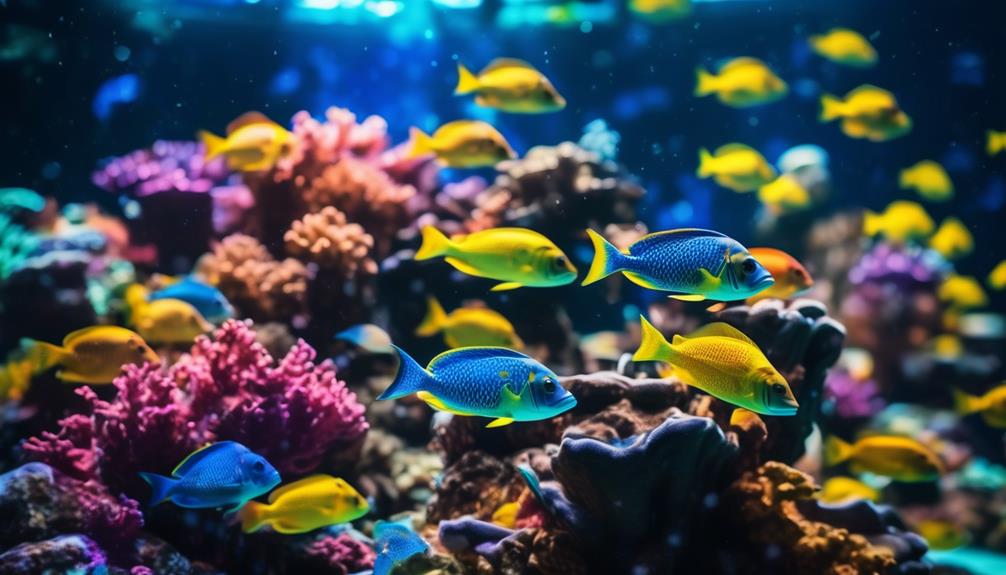
In the realm of aquatic marvels, the world of marine fishkeeping offers a multitude of captivating species that can transform any tank into a mesmerizing display of colors and textures. Among these enchanting creatures, a particular group of snappers stands out, flourishing in the vast expanse of large saltwater tanks. These vibrant snappers boast a resplendent array of hues, creating an awe-inspiring spectacle that ignites curiosity and fascination.
But what are the secrets to maintaining these remarkable fish in a thriving habitat? What are the challenges and rewards that await those who venture into the world of colorful snappers? Embark on this exploration to unravel the mysteries and uncover the hidden depths of these captivating marine denizens.
Key Takeaways
- Snappers species display a wide range of captivating colors and patterns.
- A tank size of 300 gallons or more is ideal for colorful snappers, allowing them to swim freely and form social groups.
- Water conditions, such as temperature, pH levels, and water quality, directly impact the health and vibrant colors of snappers.
- Providing a well-balanced diet, proper handling, and regular observation of behavior and appetite are essential for maintaining the health of colorful snappers in large saltwater tanks.
Snapper Species and Colors
Snapper species showcase a captivating array of colors and patterns, adding vibrancy and beauty to saltwater tanks. These fish exhibit a wide variety of hues, ranging from dull silver, gray, tan, and brown to brightly colored with blue or yellow stripes. They can also display other striking colors such as red, green, orange, pink, and purple.
The vibrant colors of snappers make them a popular choice among saltwater aquarium enthusiasts. When kept in large tanks, their vivid hues create a visually stunning display that can transform any tank into a vibrant underwater oasis. Whether it’s the subtle elegance of silver and gray or the bold and vibrant stripes of blue and yellow, snappers never fail to captivate and mesmerize with their stunning colors.
Ideal Tank Size for Colorful Snappers
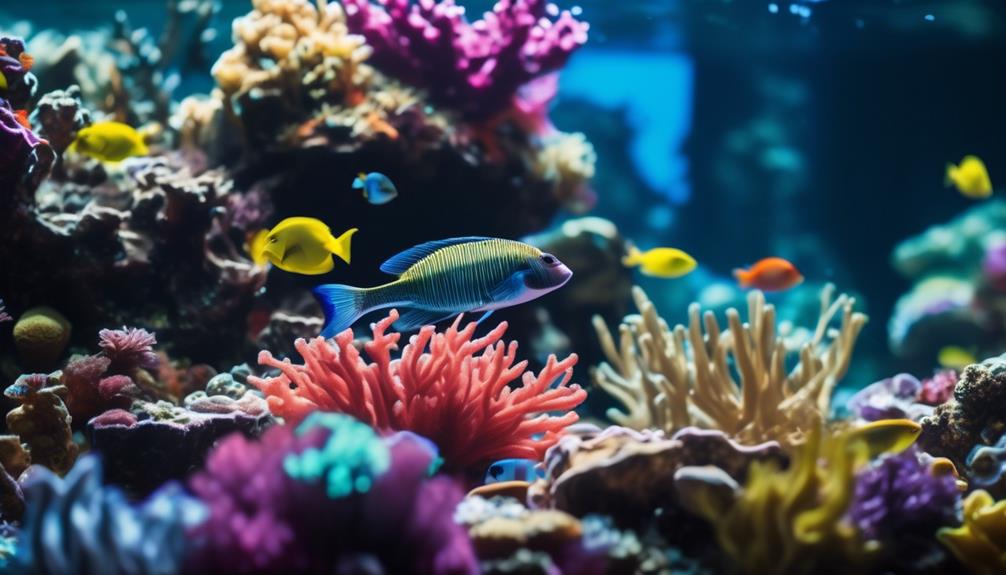
Colorful snappers thrive in saltwater tanks that provide ample space for their active nature. To ensure the well-being of these vibrant fish, it’s important to consider the ideal tank size. Here are three key factors to keep in mind:
- Physical Freedom: Providing a large tank, ideally 300 gallons or more, allows snappers to swim freely and exhibit their natural behaviors. This spacious environment promotes their overall health and happiness.
- Behavioral Harmony: Snappers are known to travel in large schools. A larger tank size enables them to form these social groups, creating a sense of companionship and reducing stress levels.
- Environmental Enrichment: With a bigger tank, you can create a more diverse and stimulating habitat. Adding live rock or hardy corals allows snappers to explore and interact with their surroundings, enhancing their overall well-being.
Setting up the Perfect Snapper Habitat
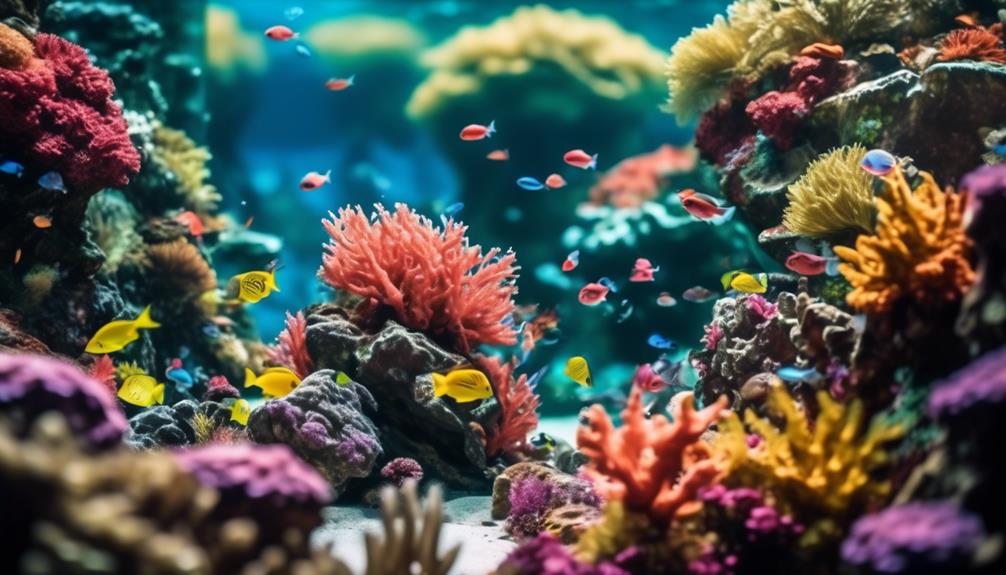
To provide the optimal living environment for these vibrant fish, saltwater tank enthusiasts must carefully consider the setup of the perfect snapper habitat. Snappers require large tanks, ideally 300 gallons or more, to accommodate their size and need for swimming space.
The tank should be sparsely decorated with live rock or hardy corals, as snappers prefer open areas for swimming.
Water conditions are also important, with temperatures ranging from 72F to 82F, slightly alkaline pH levels of 8.1 to 8.4, and moderate hardness of 8 to 12 dKH. These conditions mimic the tropical and subtropical regions where snappers are typically found.
Water Conditions for Thriving Snappers
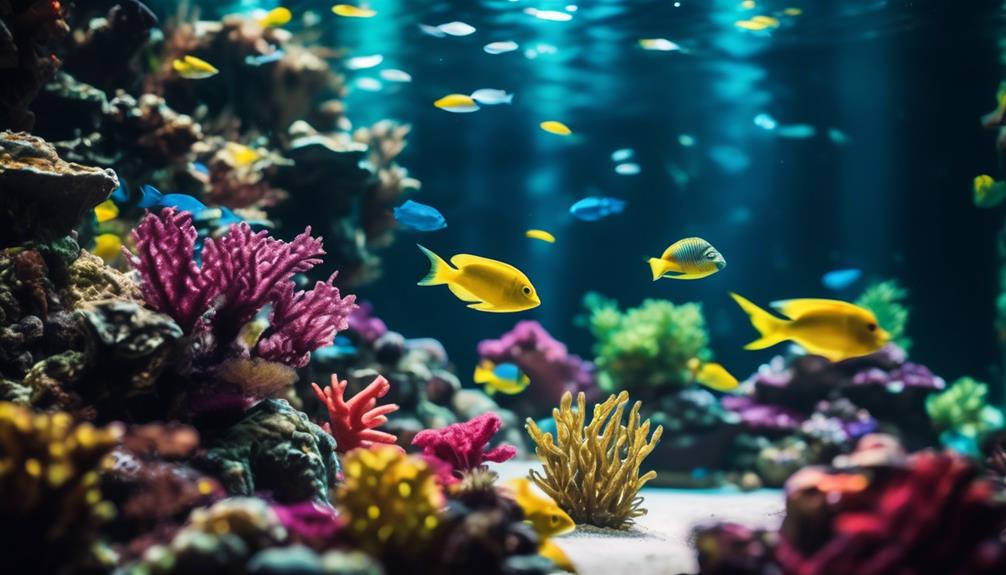
In order for snappers to thrive, it’s crucial to maintain optimal water conditions in their saltwater tanks. The water conditions directly impact the health and well-being of snappers, ensuring their vibrant colors and overall vitality.
Here are three key factors to consider when it comes to water conditions for thriving snappers:
- Temperature: Snappers thrive in tropical temperatures ranging from 72°F to 82°F. Maintaining the ideal temperature range will ensure their comfort and promote their natural behaviors.
- pH Levels: Snappers prefer slightly alkaline water with a pH range of 8.1 to 8.4. This helps to create a stable and suitable environment for their growth and overall well-being.
- Water Hardness: Moderate water hardness is essential for snapper tanks, with levels ranging from 8 to 12 dKH. This ensures that the water chemistry is balanced and supports the snappers’ health.
Feeding the Colorful Snappers
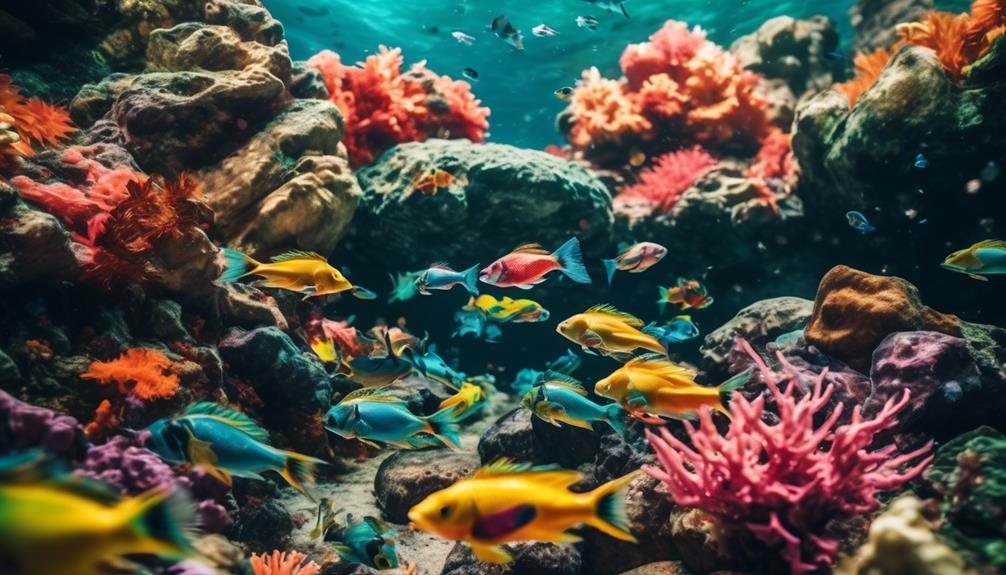
Feeding plays a crucial role in maintaining the health and vitality of the vibrant snappers in saltwater tanks. These colorful fish can be either benthic feeders or plankton feeders.
Benthic feeders should be provided with a variety of fresh and frozen foods to ensure a balanced diet. This can include shrimp, worms, clams, crustaceans, and other invertebrates. Offering a diverse range of foods will help replicate their natural feeding habits and provide them with the necessary nutrients for growth and development.
It’s important to monitor their feeding behavior and adjust the amount of food accordingly to prevent overfeeding. Regular water testing should also be conducted to ensure optimal water conditions for the snappers’ overall well-being.
Breeding Behavior of Snappers
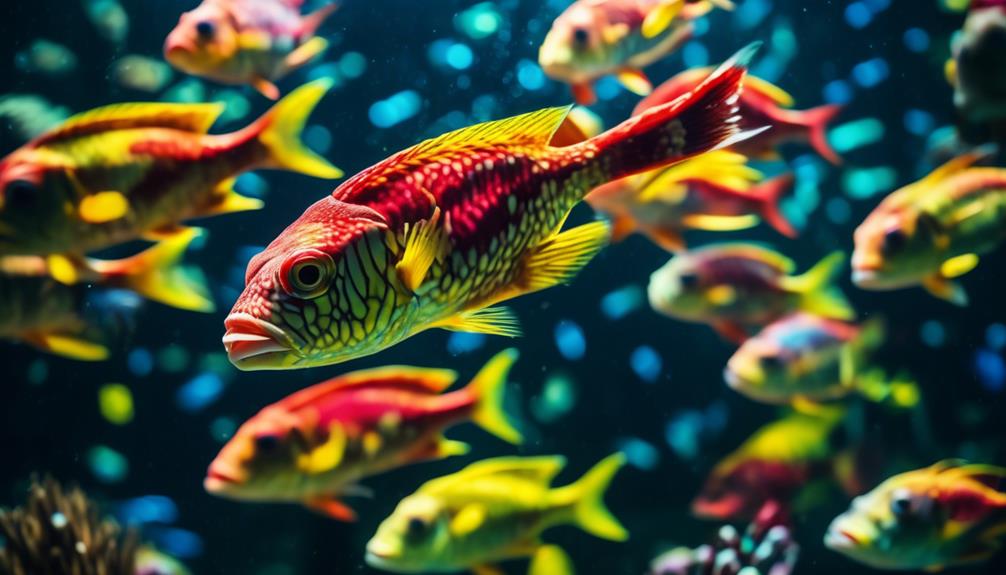
Breeding behavior among snappers is characterized by their tendency to spawn in large groups, releasing large quantities of eggs and sperm into the water. This behavior is fascinating and evokes a sense of wonder and awe in the audience.
Here are three sub-lists that highlight the emotional response:
- Astonishment:
- Snappers synchronize their spawning, creating a mesmerizing spectacle of color and movement.
- The sight of hundreds or even thousands of snappers releasing eggs and sperm simultaneously is truly breathtaking.
- Witnessing this natural phenomenon can leave one feeling amazed at the wonders of marine life.
- Curiosity:
- Scientists are still studying the exact triggers and mechanisms behind snapper breeding behavior.
- The complexity of their reproductive strategy raises intriguing questions about the evolutionary adaptations that have led to this unique behavior.
- Exploring the mysteries of snapper breeding behavior allows us to delve into the depths of the ocean’s secrets.
- Conservation:
- Understanding snapper breeding behavior is crucial for their conservation.
- By studying their reproductive patterns, researchers can develop strategies to protect and sustain snapper populations.
- Appreciating the beauty and importance of snapper breeding behavior can inspire us to take action in preserving their habitats and ensuring their survival for future generations.
Tips for Choosing Compatible Tankmates
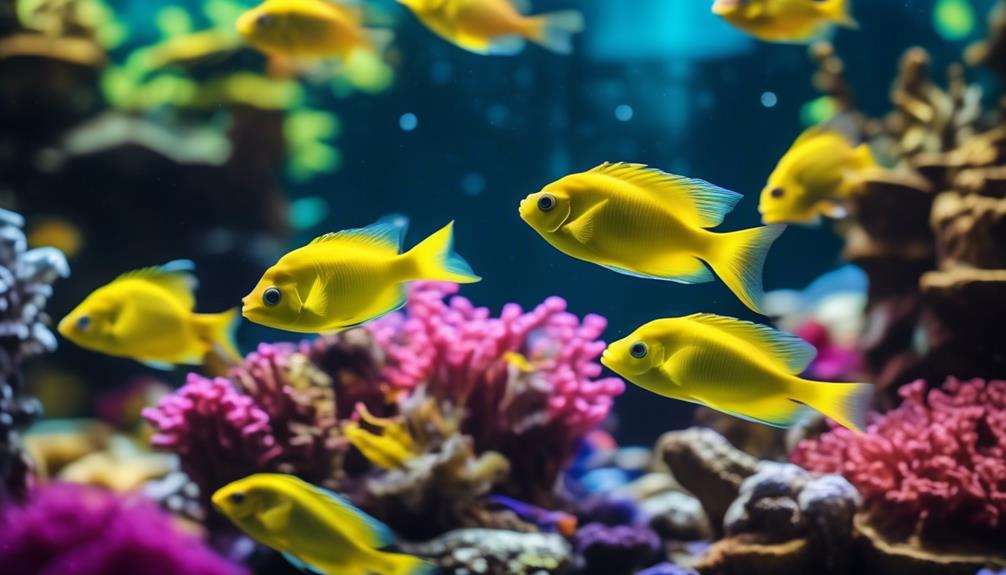
After marveling at the astonishing breeding behavior of snappers, one may wonder how to choose compatible tankmates for these colorful fish.
When selecting tankmates for snappers, it’s important to consider their non-aggressive nature and their preference for large saltwater community tanks. Snappers thrive in schools, so it’s advisable to choose other fish that can coexist peacefully in a group setting.
Additionally, it’s essential to ensure that the tankmates are compatible in terms of size and temperament. Snappers can grow up to 3.3 feet in length, so it’s crucial to select fish that can withstand their size and potential territorial behavior.
Lastly, it’s recommended to research the specific habitat and dietary needs of the snapper species to ensure compatibility with potential tankmates.
Maintaining Water Quality for Snapper Health
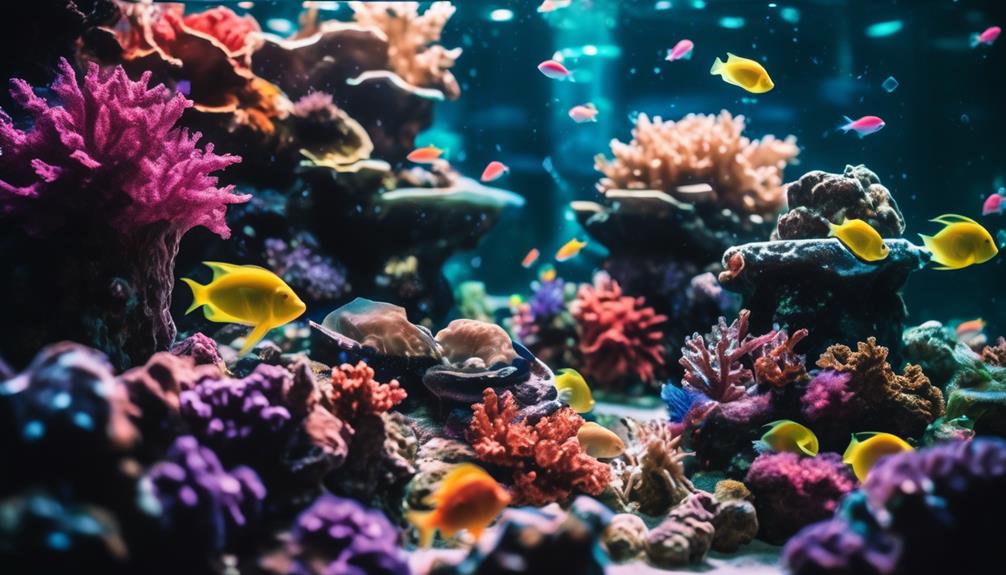
To ensure the health of snappers, it’s crucial to maintain the quality of water in their tanks. Proper water conditions are essential for their overall well-being.
Here are some key factors to consider when maintaining water quality for snapper health:
- Regular water testing: Monitoring the water parameters such as pH, temperature, and salinity is vital to ensure they’re within the appropriate range for snappers’ optimal health.
- Efficient filtration system: A high-quality filtration system is necessary to remove impurities and maintain water clarity.
- Adequate oxygenation: Snappers require well-oxygenated water to thrive. Proper aeration and circulation should be provided to maintain adequate oxygen levels.
Ensuring these aspects of water quality are met will help create a suitable environment for snappers to thrive, promoting their vibrant colors and overall well-being.
Common Diseases and How to Prevent Them
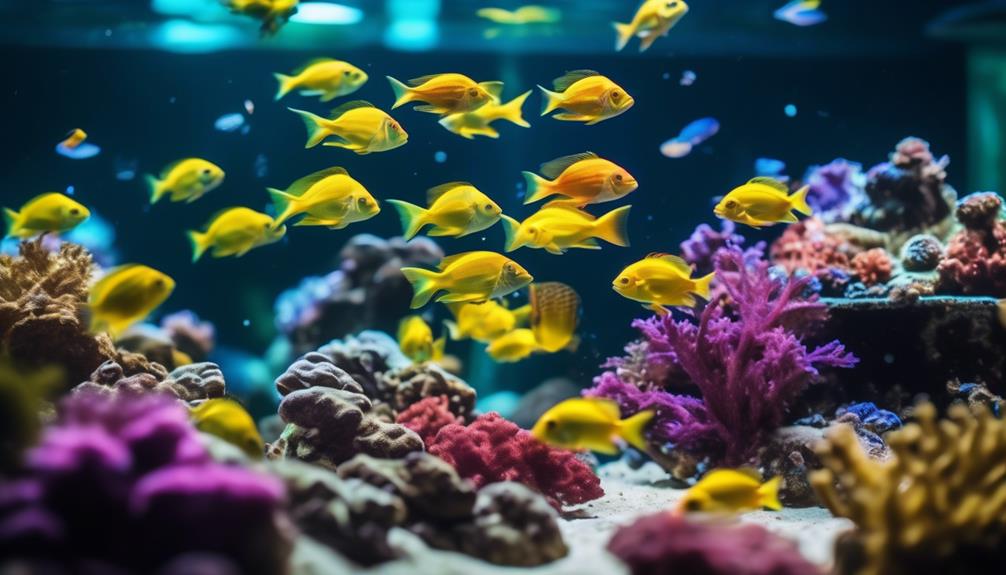
Common diseases can have a significant impact on the health and well-being of snappers in saltwater tanks. It’s important for owners to be aware of these diseases and take necessary precautions to prevent them.
One common disease that affects snappers is Ich, also known as white spot disease. This is caused by a parasite that appears as white spots on the fish’s body.
Another common disease is fin rot, which is characterized by the deterioration of the fish’s fins.
To prevent these diseases, it’s crucial to maintain clean water conditions and provide a well-balanced diet for the snappers. Regular water changes, proper filtration, and quarantine procedures for new additions to the tank can also help prevent the spread of diseases.
Snapper Handling and Acclimation Techniques
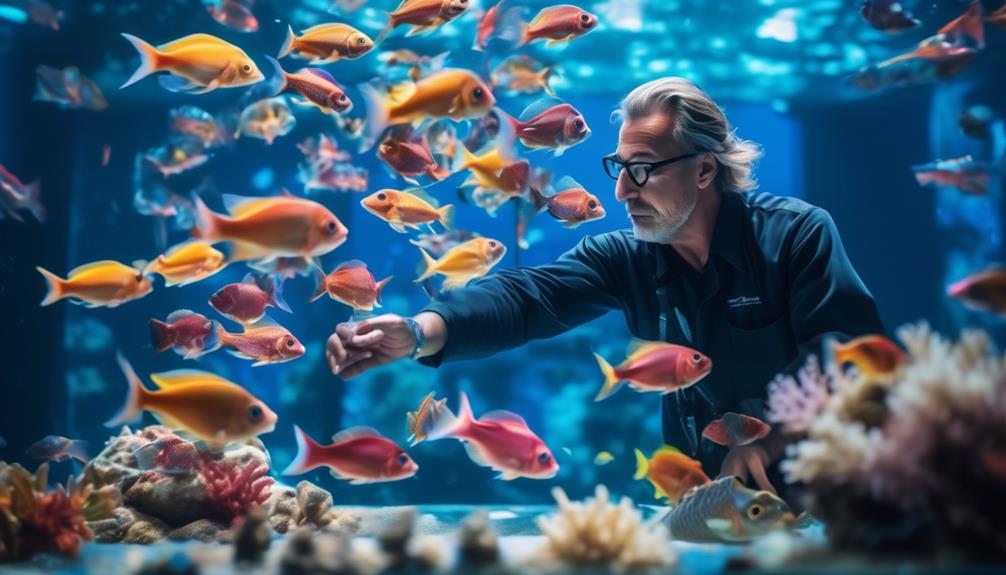
Maintaining the health and well-being of snappers in saltwater tanks goes beyond preventing common diseases; it also involves implementing proper handling and acclimation techniques. Here are some important considerations for handling and acclimating snappers in a saltwater tank:
- Gentle Handling: Snappers can be easily stressed, so it’s crucial to handle them with care. Avoid rough handling or sudden movements that could startle them.
- Slow Acclimation: Snappers need time to adjust to the new tank environment. Gradually introduce them to the tank by floating the bag they came in and slowly adding small amounts of tank water over time.
- Minimize Water Parameters Changes: Sudden changes in water temperature, pH, or salinity can be detrimental to snappers. Ensure that the tank water is properly conditioned and closely match the parameters of the water they were originally in.
Frequently Asked Questions
What Are Some Common Diseases That Affect Snappers and How Can They Be Prevented?
Some common diseases that affect snappers include bacterial infections, parasitic infestations, and fungal diseases. These can be prevented by maintaining good water quality, providing a balanced diet, and quarantining new fish before introducing them to the tank.
What Is the Ideal Tank Size for Keeping Colorful Snappers?
The ideal tank size for keeping colorful snappers is at least 300 gallons or more. These vibrant fish thrive in large saltwater tanks and prefer sparsely decorated environments with live rock or hardy corals.
What Are Some Tips for Choosing Compatible Tankmates for Snappers?
When choosing tankmates for snappers, it is important to consider their non-aggressive nature. Compatible options include other non-aggressive fish like tangs, wrasses, and gobies, as well as invertebrates like shrimp and crabs.
How Should Snappers Be Handled and Acclimated to Their New Tank?
When handling and acclimating snappers to their new tank, it is important to do so with care. Slowly introduce them to the tank’s water temperature and conditions, allowing them time to adjust before releasing them.
What Are the Best Water Conditions for Snappers to Thrive in a Saltwater Tank?
The best water conditions for snappers to thrive in a saltwater tank include tropical temperatures (72F to 82F), slightly alkaline pH (8.1 to 8.4), and moderate hardness (8 to 12 dKH).
Are Colorful Grunts Compatible with Colorful Snappers in Large Saltwater Tanks?
Yes, colorful grunts fish with talent are compatible with colorful snappers in large saltwater tanks. Both species thrive in similar water conditions and are non-aggressive, making them suitable tank mates. Their vibrant colors and diverse sizes create a visually stunning display, adding vibrancy to any saltwater aquarium.
Conclusion
In conclusion, creating a thriving habitat for colorful snappers in large saltwater tanks requires careful consideration of their specific needs.
From providing ample space and regulated water parameters to choosing compatible tankmates and maintaining water quality, there are several factors to keep in mind.
By following the guidelines outlined in this article, aquarium enthusiasts can enjoy the vibrant beauty of snappers while ensuring their health and well-being.




